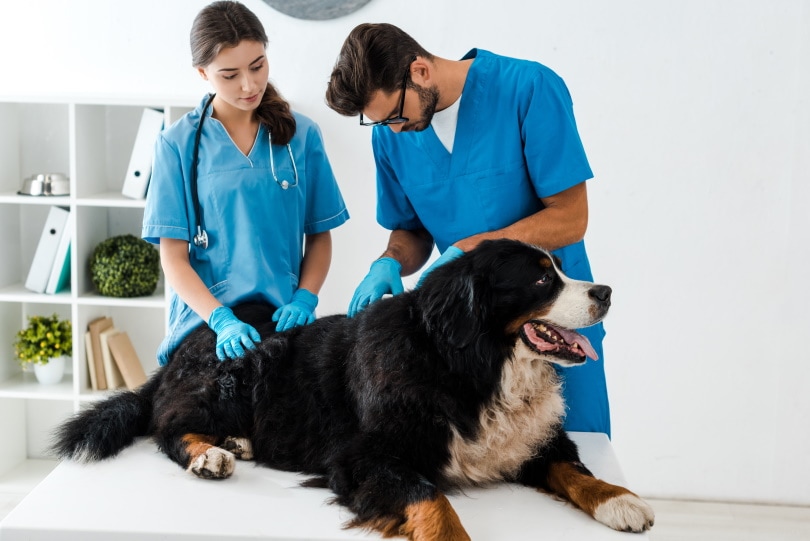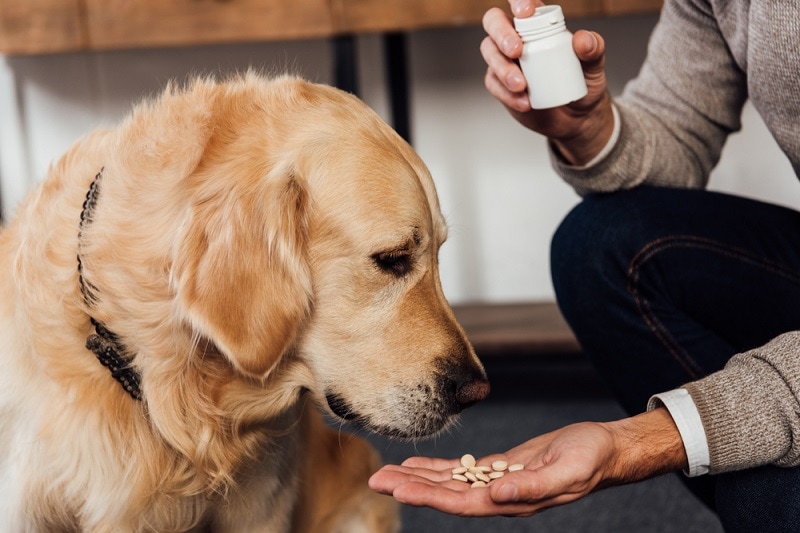If you recently purchased a new puppy or are considering getting one for your family, it’s common to wonder what the most common diseases might be so you can prepare for the worst. The good news is that breeders have been carefully selectively breeding dogs to be free of health problems for thousands of years, and the modern K9 is quite healthy and will likely provide you with many years of happiness. However, there are a few problems that still pop up frequently, and we’ve made a list of the most common ones so you can learn more about them. Keep reading while we talk a little about each problem facing your dog, so you will know what to look for and what to do if you notice a problem.
The 11 Most Common Diseases in Dogs
1. Arthritis

Arthritis in dogs is similar to what humans experience. The joints become swollen and inflamed, and movement becomes painful. It worsens with age and can affect any or all joints in the body, but the knees, shoulders, and toes are often the most painful. Unfortunately, there is no cure for arthritis, but omega-3 fatty acids can help reduce swelling, providing some natural relief.
2. Bloat

Bloat is very common in many dog breeds, especially those with deep chests. It causes the stomach to fill with air putting pressure on the organs and preventing blood from reaching the back legs. It can also cause the stomach to twist, trapping blood inside and destroying the stomach lining. This condition is life-threatening, and your dog will need immediate medical attention. Symptoms of bloat include a swollen stomach, restlessness, and excessive salivation.
3. Cancer

Cancer is a word that no one wants to hear, but unfortunately, it can affect our dogs like it affects our human loved ones. Several types of cancer can affect your dog, and it is the leading cause of death for pets over 10. Lymphoma, breast cancer, and bone cancer are the most common, but there are many others. Fortunately, many cancers are curable if you catch them early, so you will need to be vigilant about taking your dog for routine checkups.
4. Cataracts

Cataracts is another disease that mainly affects older dogs but can also occur in younger ones on occasion. Cataracts is a cloudy film that develops over the eye’s lens, making it difficult to see. Doctors can often repair cataracts by removing the lens, but it often needs to progress until the dog has difficulty seeing before they can take action.
5. Dental Disease

Dental disease in dogs is a major issue, with some experts suggesting more than 80% of dogs over 4 have some form. Dental disease can cause pain and prevent the dog from eating properly. It spreads to other teeth and can leave your dog with a big problem. Manually brushing your dog’s teeth with a pet-safe toothbrush may sound strange, but it is the best way to slow the progression. Crunchy kibble found in dry dog food will also help keep the teeth whiter than wet food because it helps scrape away the tartar.
6. Ear Infections

Any dog with floppy ears is susceptible to ear infections. Floppy ears can trap and hold dirt and moisture, creating the perfect environment for bacteria to grow. Once an infection gets going, it can cause your dog to shake its head, and scratch its ears, and you may also notice a bad smell. Luckily ear infections are usually easy to treat with medication after visiting your vet, but prevention is the best method. Keeping your dog’s ears clean and dry will prevent the buildup of dirt and moisture.
7. Heartworm

Heartworm is another common problem that is often the result of a mosquito bite. The parasites transmitted in the bite make their way to your pet’s heart, where they will begin causing problems. The best way to prevent your pet from getting heartworm is to give them flea and tick medication which often contains ingredients that will eliminate any heartworm problem
8. Hip Dysplasia

Hip Dysplasia is a common hereditary issue that affects many breeds. It’s the result of a malformed hip joint that causes the bones to wear down, reducing your pet’s ability to put weight on the leg. Large and heavy dogs will cause the bones to wear down faster, as will active dogs that do a lot of running and jumping. If you notice your dog struggling to get up, avoiding stairs, and walking with a strange bunny hop gait, you might want to take your dog to the vet.
9. Lyme Disease

Lyme disease is an extremely popular disease in every dog breed because it comes from ticks. Most dogs are extremely curious and will put themselves in harm’s way by not paying attention to their surroundings. Dogs often go into thick brush and can pick up several ticks in a single trip. Staying vigilant about removing them quickly and putting flea and tick medication on your dog can help reduce the risk of your dog getting Lyme disease.
10. Obesity

Obesity is another huge problem facing American dogs, and some experts suggest that more than 40% of dogs older than 4 need to lose weight. Obesity can lead to several health issues, including diabetes, cardiovascular disease, high blood pressure, and many more. Ensuring your pets get enough activity every day and following the suggested portion size for your dog can help prevent the onset of obesity.
The exact amount of calories an individual animal needs to maintain a healthy weight is variable and influenced by many factors including genetics, age, breed, and activity level. This tool is meant to be used only as a guideline for healthy individuals and does not substitute veterinary advice
11. Patellar Luxation

Patellar luxation is another common disease in dogs that affects the kneecap. The Patellar ligament holds the kneecap in place, and this condition causes it to allow the kneecap to slide and pop out of place. Dogs with this condition will often swing their leg out to put the kneecap back in place, but over time the ligament will stretch, allowing the kneecap to fall out of place more often, which can affect your dog’s ability to put weight on it.
Conclusion
While this list may make it seem like dogs are prone to health issues, but nothing could be further from the truth. Most dog breeds are extremely healthy and will live many years without requiring veterinary care. We recommend brushing your dog’s teeth as often as possible to slow the progression of dental disease and pay close attention to the portion size listed on your dog’s food package to help your dog maintain an ideal weight.
We hope you have enjoyed reading this article and found it informative. If you have learned something new, please share this guide to the 11 most common diseases in dogs on Facebook and Twitter.
See also:
Featured Image Credit: 135pixels, Shutterstock











